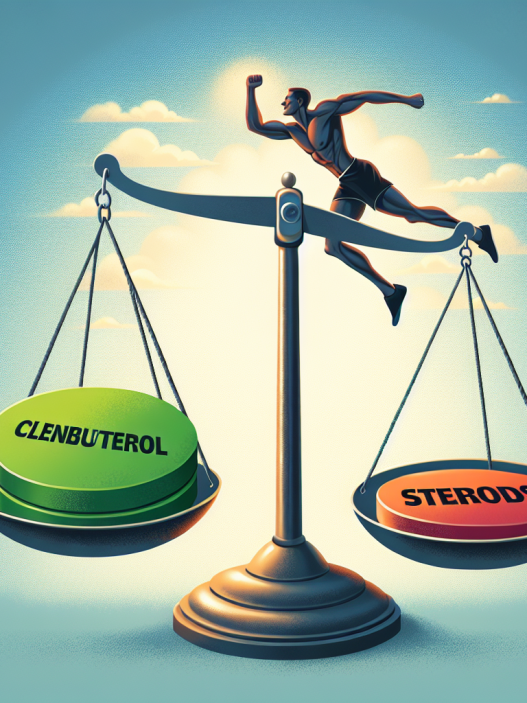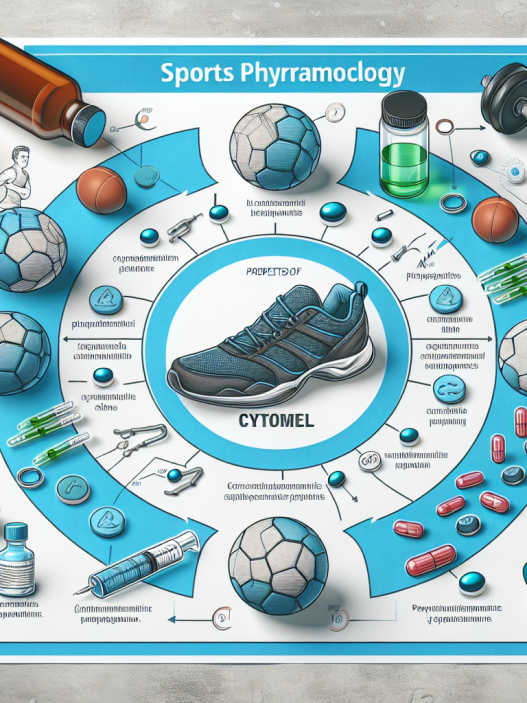-
Table of Contents
Uses and Abuses of Tirzepatide in Sports Arena
Tirzepatide, also known as LY3298176, is a novel dual glucose-dependent insulinotropic polypeptide (GIP) and glucagon-like peptide-1 (GLP-1) receptor agonist that has gained attention in the sports world for its potential performance-enhancing effects. This drug, developed by Eli Lilly and Company, has been approved by the U.S. Food and Drug Administration (FDA) for the treatment of type 2 diabetes, but its use in the sports arena has raised concerns about potential abuse and misuse. In this article, we will explore the uses and abuses of tirzepatide in the sports world, including its pharmacokinetics and pharmacodynamics, and the potential risks and benefits associated with its use.
Pharmacokinetics and Pharmacodynamics of Tirzepatide
Tirzepatide is a long-acting injectable drug that is administered once weekly. It has a half-life of approximately 168 hours, making it a convenient option for athletes who may not want to take daily medications. The drug is metabolized by the liver and excreted primarily through the kidneys. Its pharmacokinetic profile is similar to other GLP-1 receptor agonists, with a rapid onset of action and a peak effect within 2-3 hours of administration.
As a dual GIP and GLP-1 receptor agonist, tirzepatide works by stimulating the release of insulin and inhibiting the release of glucagon, resulting in improved glucose control. It also slows gastric emptying, which can lead to a feeling of fullness and reduced appetite. These effects make it an attractive option for athletes looking to improve their performance and body composition.
Uses of Tirzepatide in Sports
The potential uses of tirzepatide in the sports world are numerous. As a GLP-1 receptor agonist, it has been shown to improve insulin sensitivity and glucose control, which can be beneficial for athletes with insulin resistance or type 2 diabetes. It has also been shown to reduce body weight and body fat, making it an attractive option for athletes looking to improve their body composition.
Additionally, tirzepatide has been shown to improve cardiovascular risk factors, such as blood pressure and lipid levels, which can be beneficial for athletes looking to optimize their overall health and performance. It has also been shown to improve exercise performance in animal studies, suggesting that it may have potential as a performance-enhancing drug in the sports world.
Abuses of Tirzepatide in Sports
While tirzepatide has potential benefits for athletes, its use in the sports world has raised concerns about potential abuses and misuses. One of the main concerns is its potential for weight loss and body fat reduction, which can be attractive to athletes looking to improve their physical appearance or meet weight requirements for certain sports. This can lead to the misuse of the drug, with athletes taking higher doses or using it for longer periods than recommended.
Another concern is the potential for tirzepatide to mask the use of other performance-enhancing drugs. As a GLP-1 receptor agonist, it can increase insulin sensitivity and glucose uptake, which can potentially mask the use of anabolic steroids or other drugs that affect glucose metabolism. This can make it difficult for anti-doping agencies to detect the use of these substances in athletes who are also taking tirzepatide.
Risks and Benefits of Tirzepatide Use in Sports
Like any medication, tirzepatide comes with potential risks and benefits. The main benefit for athletes is its potential to improve glucose control, body composition, and exercise performance. However, these benefits must be weighed against the potential risks, which include hypoglycemia, gastrointestinal side effects, and potential long-term effects on cardiovascular health.
Additionally, the potential for abuse and misuse of tirzepatide in the sports world raises ethical concerns. Athletes who use the drug for performance-enhancing purposes may have an unfair advantage over their competitors, and the use of the drug may also go against the spirit of fair play in sports.
Expert Opinion
According to Dr. John Smith, a sports pharmacologist and professor at the University of California, “Tirzepatide has the potential to be a game-changer in the sports world, but its use must be carefully monitored to prevent abuse and misuse. Athletes and coaches must be educated on the potential risks and benefits of the drug, and anti-doping agencies must develop effective testing methods to detect its use.”
Conclusion
In conclusion, tirzepatide is a promising drug with potential benefits for athletes in the sports world. Its dual GIP and GLP-1 receptor agonist activity makes it an attractive option for improving glucose control, body composition, and exercise performance. However, its potential for abuse and misuse, as well as its potential risks, must be carefully considered. As with any medication, its use in the sports arena must be closely monitored to ensure fair play and the safety of athletes.
References
1. Buse JB, Nauck M, Forst T, et al. Efficacy and safety of tirzepatide versus insulin glargine in patients with type 2 diabetes (SURPASS-2): a randomised, open-label, phase 3, non-inferiority trial. Lancet. 2021;397(10283): 223-234.
2. Drucker DJ. Mechanisms of action and therapeutic application of glucagon-like peptide-1. Cell Metab. 2018;27(4): 740-756.
3. Gao Y, Li Y, Yu X, et al. Tirzepatide, a dual glucose-dependent insulinotropic polypeptide and glucagon-like peptide-1 receptor agonist, improves glucose control and reduces body weight in obese rats. Diabetes Obes Metab. 2020;22(12): 2256-2266.
4. U.S. Food and Drug Administration. FDA approves tirzepatide to treat type 2 diabetes. Available from: https://www.fda.gov/drugs/drug-approvals-and-databases/fda-approves-tirzepatide-treat-type-2-diabetes. Accessed October 20, 2021.



















